A house salad is a classic dish, typically served as a side to complement a variety of main courses. Often enjoyed as a light, refreshing meal starter, it is made up of simple yet delicious ingredients that can be customized in many ways. This article will dive deep into what a house salad contains, its ingredients, variations, and tips to make it even better.
Print
House Salad Recipe – Fresh and Customizable
- Total Time: 10 minutes
- Yield: 4 servings
- Diet: Vegetarian
Description
This classic house salad is fresh, crisp, and easy to customize. Featuring a mix of leafy greens, juicy tomatoes, crunchy cucumbers, and a light vinaigrette, it’s the perfect side dish or light meal. Whether you prefer it with added protein or as a simple starter, this salad is packed with nutrients and flavor.
Ingredients
- 4 cups romaine lettuce, chopped
- 2 cups spinach or arugula
- 1 cup cherry tomatoes, halved
- 1 cup cucumber, sliced
- ½ cup shredded carrots
- ¼ cup red onion, thinly sliced
Optional Add-ins:
- ½ cup grilled chicken (for added protein)
- ¼ cup feta or shredded parmesan (for a tangy kick)
- ¼ cup croutons (for crunch)
- ¼ cup avocado, sliced (for creaminess)
For the Dressing:
- ¼ cup extra virgin olive oil
- 2 tbsp balsamic vinegar (or lemon juice)
- 1 tsp Dijon mustard
- 1 tsp honey (optional, for sweetness)
- 1 clove garlic, minced
- Salt and pepper, to taste
Instructions
- Prepare the Ingredients: Wash and dry all vegetables. Chop the romaine lettuce, slice cucumbers, halve the cherry tomatoes, and thinly slice the red onion.
- Assemble the Salad: In a large bowl, combine the romaine, spinach, cherry tomatoes, cucumbers, carrots, and red onion. Add any optional ingredients like grilled chicken, feta, or avocado.
- Make the Dressing: In a small bowl, whisk together the olive oil, balsamic vinegar, Dijon mustard, honey, and minced garlic. Season with salt and pepper.
- Toss and Serve: Drizzle the dressing over the salad and toss gently to combine. Serve immediately for the freshest flavor.
Notes
- Make it Vegan: Omit the cheese and use maple syrup instead of honey in the dressing.
- Make it Low-Carb: Skip the croutons and opt for a sugar-free dressing.
- Storage Tip: Keep the dressing separate if making ahead to maintain freshness.
- Prep Time: 10 minutes
- Cook Time: 0 minutes
- Category: Side Dish, Salad
- Method: Tossed
- Cuisine: American
Core Ingredients of a House Salad
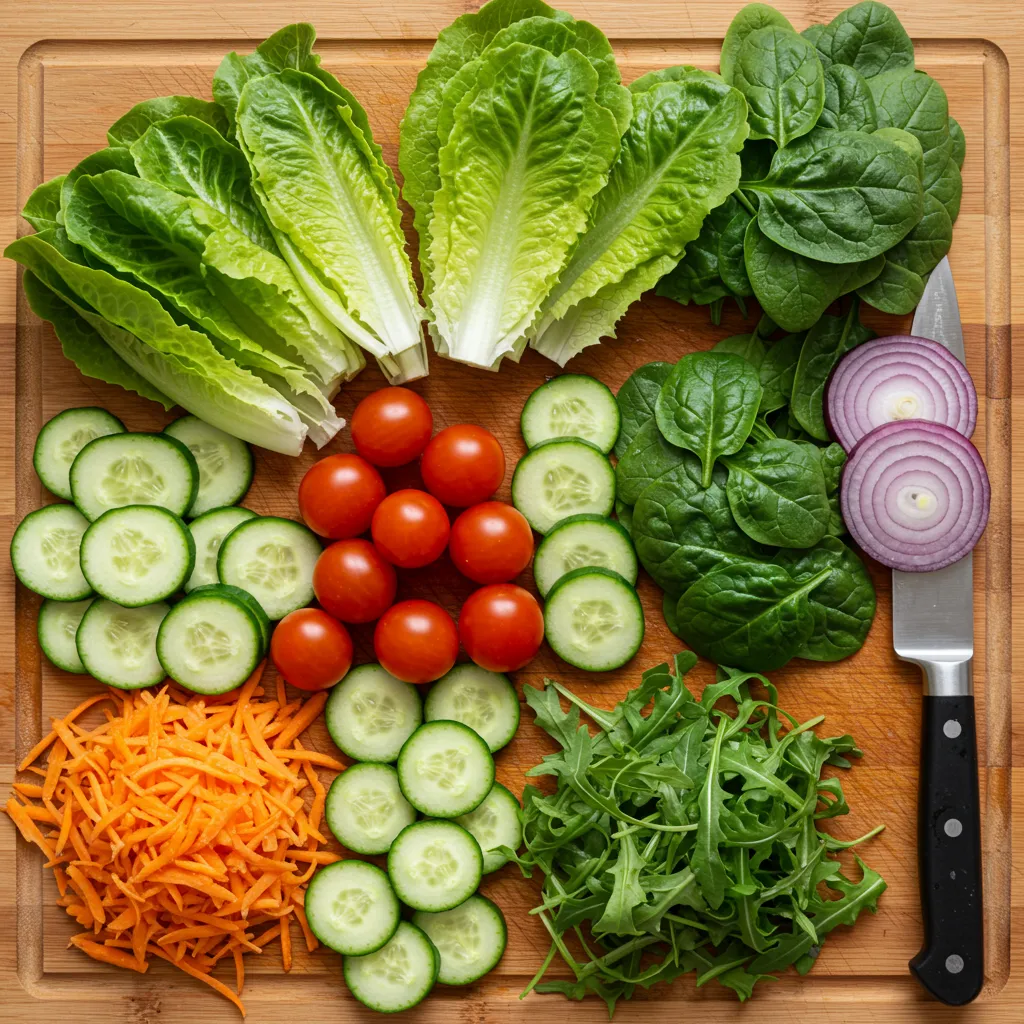
The foundation of any house salad lies in its ingredients, typically made up of a few simple yet fresh items that provide a satisfying balance of flavors and textures. Let’s explore the essential components.
Leafy Greens
The heart of any house salad is the leafy greens. These not only provide bulk but also form the main texture and base. Common choices for leafy greens include:
- Romaine Lettuce – Valued for its crunch and subtle, mildly bitter taste.
- Iceberg Lettuce: Mild and crunchy, offering a lighter base.
- Spinach: Packed with nutrients and offers a tender bite.
- Arugula: Adds a peppery flavor to the salad.
Leafy greens are rich in essential vitamins, such as Vitamin A and K, and are high in fiber, making them an excellent choice for a healthy salad.
Vegetables and Additions
To add more texture and flavor to a house salad, various vegetables are included. These vegetables complement the greens and create a colorful dish. Some popular choices are:
- Tomatoes: Cherry or grape tomatoes are sweet and juicy, adding a fresh burst.
- Cucumbers: Mild and crunchy, perfect for a refreshing bite.
- Carrots: Grated or sliced, carrots contribute natural sweetness and color.
- Red Onions: Thinly sliced, they bring a mild sharpness that balances the sweetness of other vegetables.
In addition, you might also find:
- Bell Peppers: Available in a range of colors for added vibrancy.
- Avocados: Offer a creamy texture and a subtle, buttery flavor.
- For more creative salad ideas, check out What is a Greek Salad Made Of?
Proteins and Extras
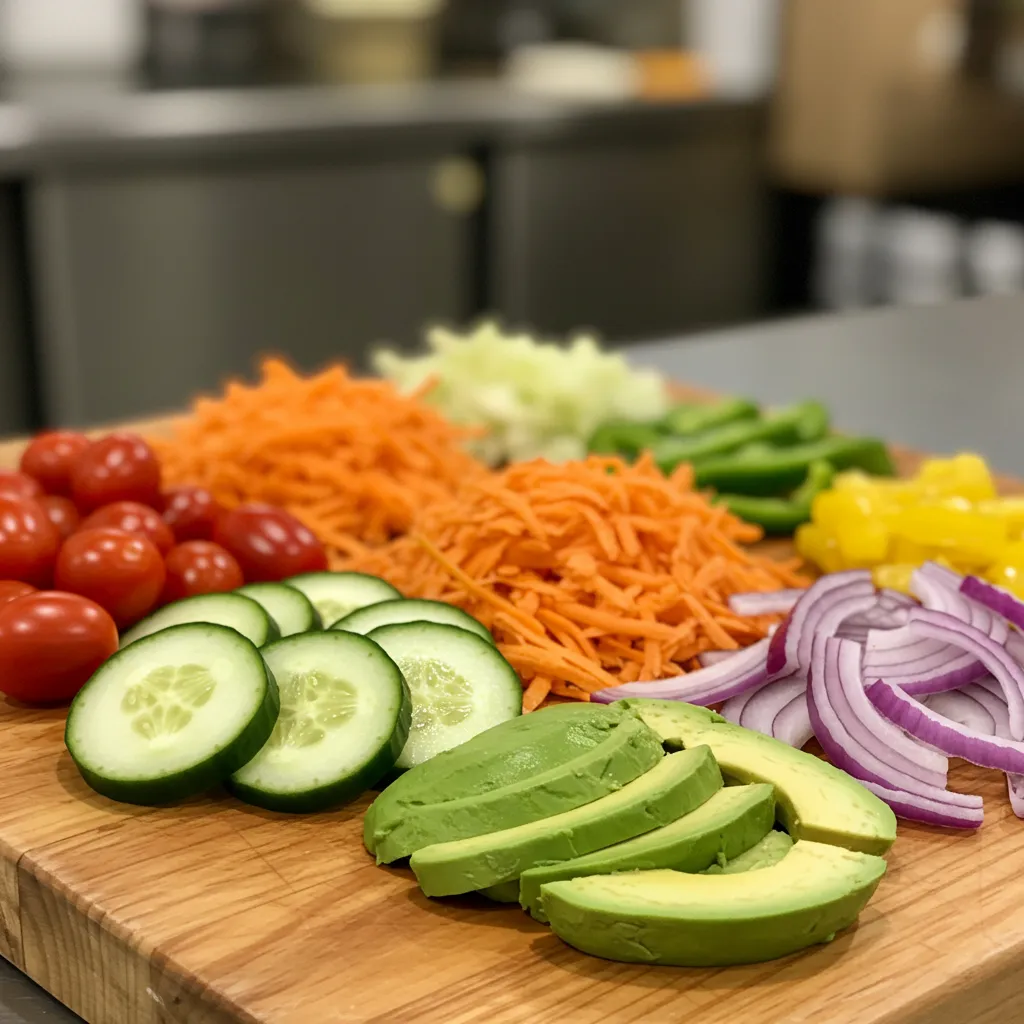
Adding proteins and extras to a house salad makes it more filling and nutritious. Proteins help maintain muscle health and keep you full longer. Here are some excellent options to enhance your salad:
- Grilled Chicken – A lean and flavorful protein choice. It pairs well with various dressings and adds a satisfying bite. Chicken provides a lean source of protein along with key vitamins your body needs.
- Hard-Boiled Eggs – Packed with protein and healthy fats, eggs add richness and texture. They are also a great source of choline, which supports brain health. Check out the latest research on egg nutrition from Harvard T.H. Chan School of Public Health.
- Nuts and Seeds – Almonds, walnuts, sunflower seeds, and pumpkin seeds provide crunch and healthy fats. These are rich in antioxidants and omega-3 fatty acids, which support heart health.
Including these ingredients ensures a well-balanced house salad with protein, healthy fats, and essential nutrients. By mixing and matching different extras, you can customize your salad to fit your dietary needs.
Dressings for Your House Salad
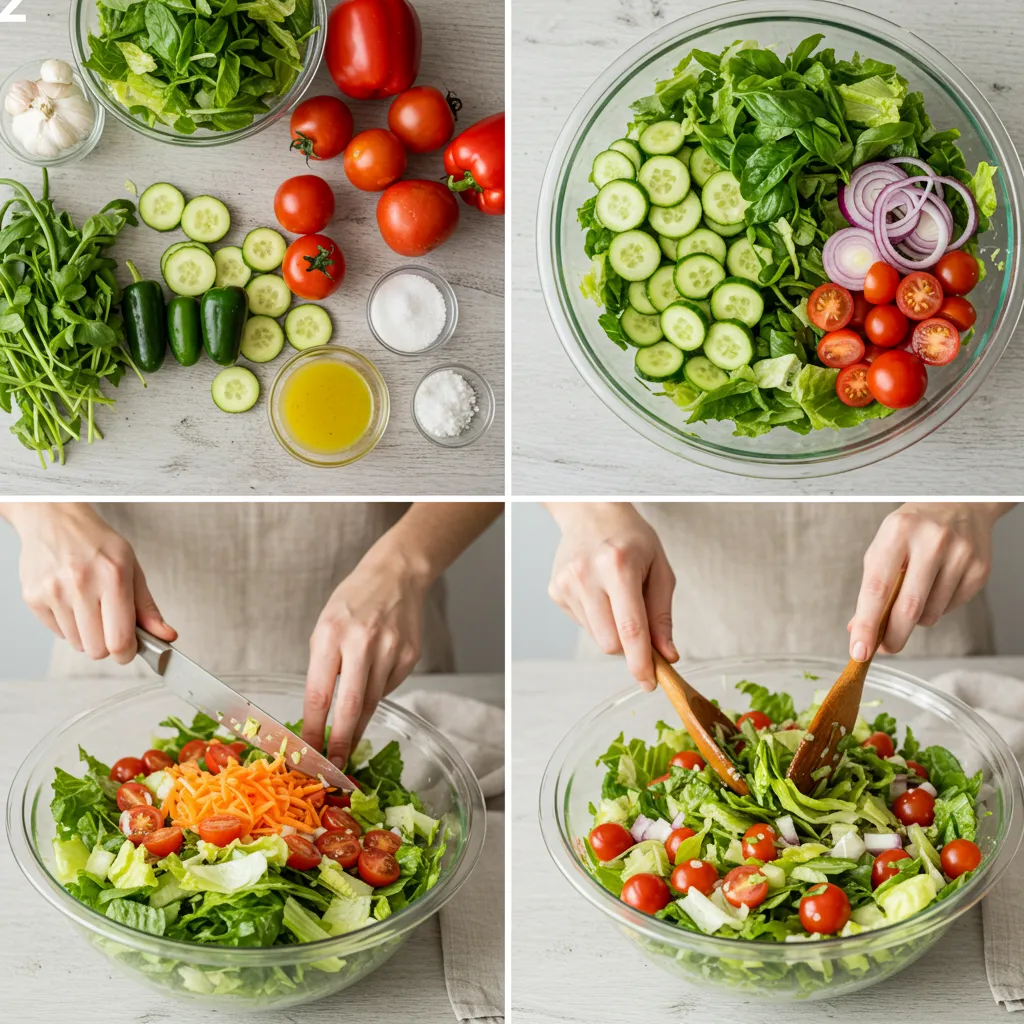
The dressing is the key element that brings all the ingredients together. Choosing the right dressing can elevate the flavor of your salad. Here are some classic options:
- Ranch Dressing: Creamy and rich, it’s a favorite for many.
- Vinaigrette: A tangy combination of oil, vinegar, and mustard, which offers a refreshing bite.
- Caesar Dressing: Rich and creamy, often paired with romaine lettuce.
- Balsamic Glaze: Offers a sweet, tangy depth to your salad.
- Italian Dressing: Herbaceous and zesty, it’s perfect for those who enjoy a more savory flavor.
The dressing should complement the freshness of the ingredients, not overpower them. Consider this when choosing your ingredients.
House Salad Variations and Alternatives
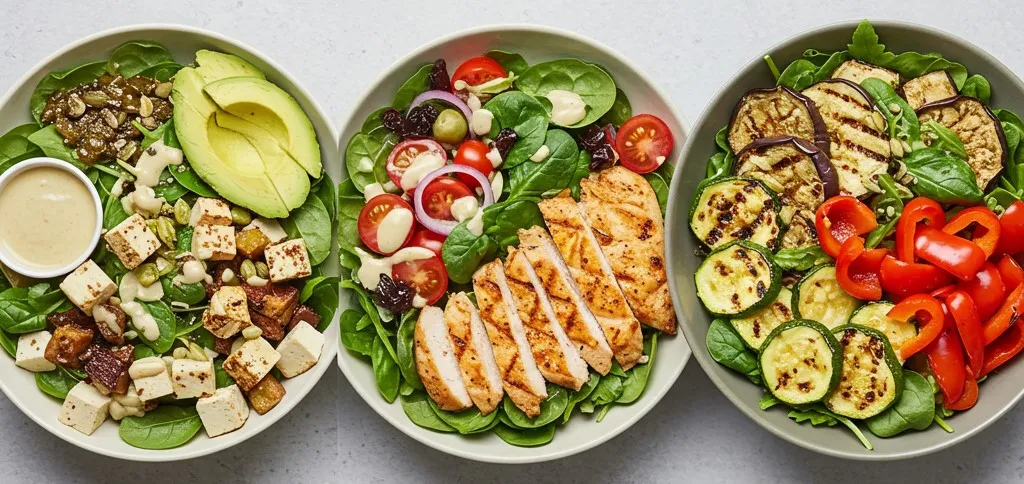
House salads are incredibly versatile and can be adapted to suit various dietary preferences. Looking to switch it up? Try these tasty variations:
- Vegan House Salad: Swap dairy-based dressings for vegan options like tahini or a lemon-tahini dressing. For a dairy-free option, use nutritional yeast to add a savory, cheese-like flavor.
- Low-Carb House Salad: Skip the croutons and opt for a sugar-free dressing.
- Grilled Vegetable House Salad: For extra flavor, add grilled vegetables like zucchini, eggplant, or peppers.
This flexibility makes the house salad an excellent choice for anyone looking to customize their meal based on dietary restrictions or personal preferences.
How Is a House Salad Different from Other Types of Salads?
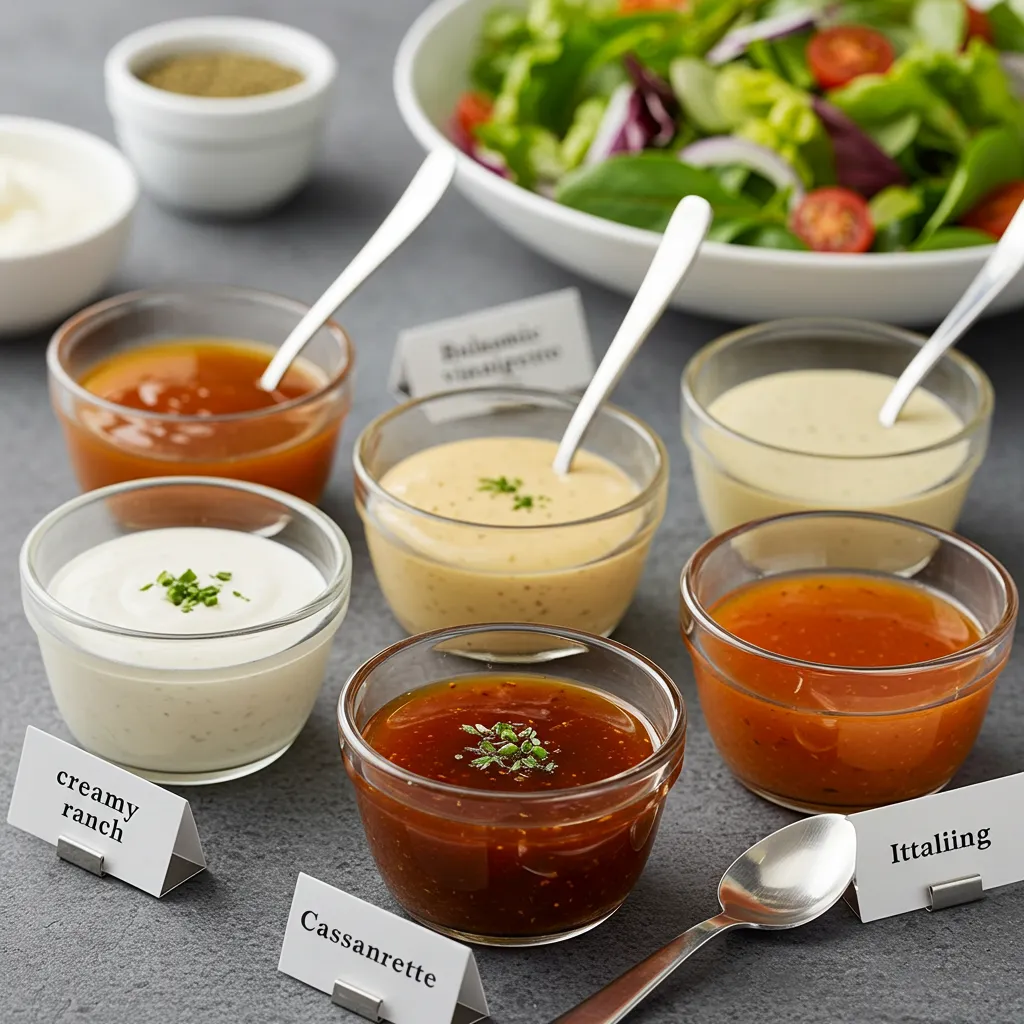
Although house salads are often compared to other types of salads, there are key differences. Here’s how they stack up against some popular varieties:
- Caesar Salad: Typically features romaine lettuce, croutons, parmesan cheese, and Caesar dressing, making it richer and heavier than a house salad.
- Greek Salad: Comprised of tomatoes, cucumbers, olives, red onions, and feta, a Greek salad is more Mediterranean in flavor and usually lacks the leafy greens that a house salad emphasizes.
- Cobb Salad: A hearty salad often served as a main dish, including protein-heavy ingredients like chicken, bacon, eggs, avocado, and blue cheese. In contrast, a house salad is lighter and more customizable.
The house salad is the perfect base, offering simplicity and flexibility with lighter ingredients compared to more complex salads.
Tips for Creating the Perfect House Salad
- Choose Fresh Ingredients – Fresh, seasonal veggies can elevate the flavor of your salad and make a noticeable difference in taste.
- Balance the Flavors: Aim for a balance between sweet, salty, and bitter flavors. For example, pair sweet carrots with tangy dressing and bitter arugula for a well-rounded taste.
- Don’t Overdress: Apply dressing sparingly. You can always add more later, but it’s better to start with less. Dressing should enhance, not dominate, the salad.
- Boost Texture – Balance your salad with a mix of crunch from croutons or nuts, creaminess from avocado, and softness from grilled veggies or cheeses.
- Make it Ahead: You can prepare most of the salad ingredients in advance. Chop the vegetables, store them in containers, and add dressing just before serving.
Conclusion
A house salad is a versatile, light dish that can be tailored to suit any occasion. By focusing on fresh ingredients and experimenting with various add-ins like proteins and toppings, you can create a salad that’s perfect for any meal. Whether you’re keeping it simple or dressing it up with extras, a house salad remains a timeless, healthy option to enjoy.
Remember, the key to a great house salad lies in the balance of ingredients and flavors. So, feel free to get creative, experiment with different dressings, and make the dish your own!
FAQs About House Salads
What are the 5 basic salad types? Salads generally fall into five main categories:
- Green Salads: Made primarily from leafy greens.
- Bound Salads – Dishes like potato salad where ingredients are held together with a thick dressing, typically mayonnaise or a creamy blend.
- Vegetable Salads: A variety of vegetables tossed together, sometimes with a light dressing.
- Protein-Based Salads: Include proteins such as grilled chicken, shrimp, or beans.
- Fruit Salads – A refreshing mix of fresh fruits, often tossed with a light, sweet dressing.
What is the difference between a house salad and a regular salad? A house salad is a basic, customizable dish featuring fresh greens and vegetables, often served with simple dressings and add-ins like cheese or croutons. A regular salad may contain additional ingredients such as grains, meats, or more complex dressings.
What Are the 5 Key Elements That Make a Salad Truly Satisfying? To create a satisfying salad, include:
- Greens: The base of any salad.
- Vegetables: Added for texture and flavor.
- Protein: To make the salad more filling.
- Cheese: For richness and flavor.
- Dressing: Ties the salad together with its flavors.

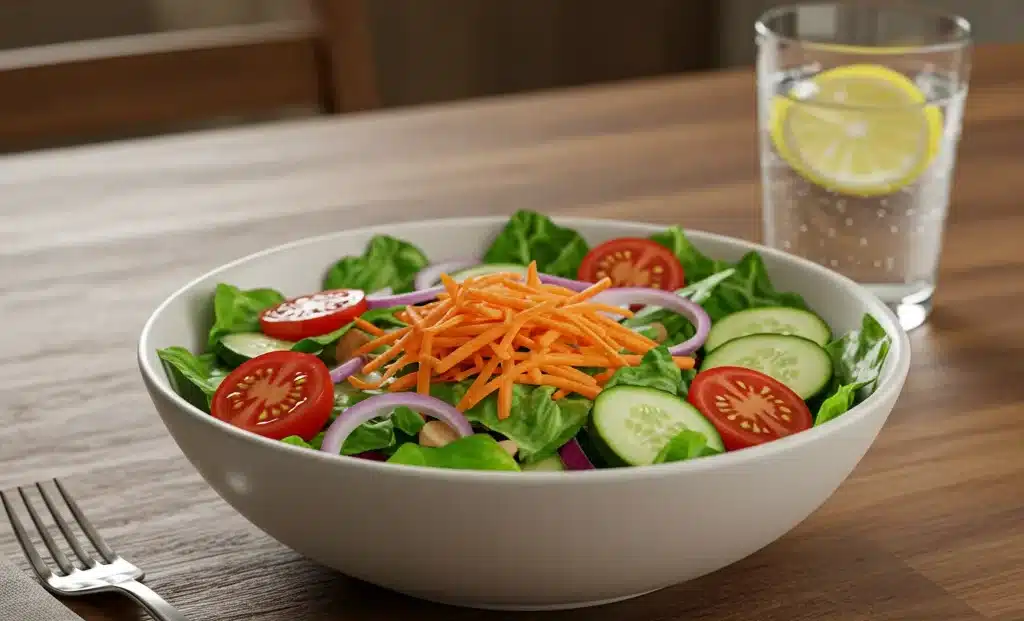
Sounds good and delicious…….